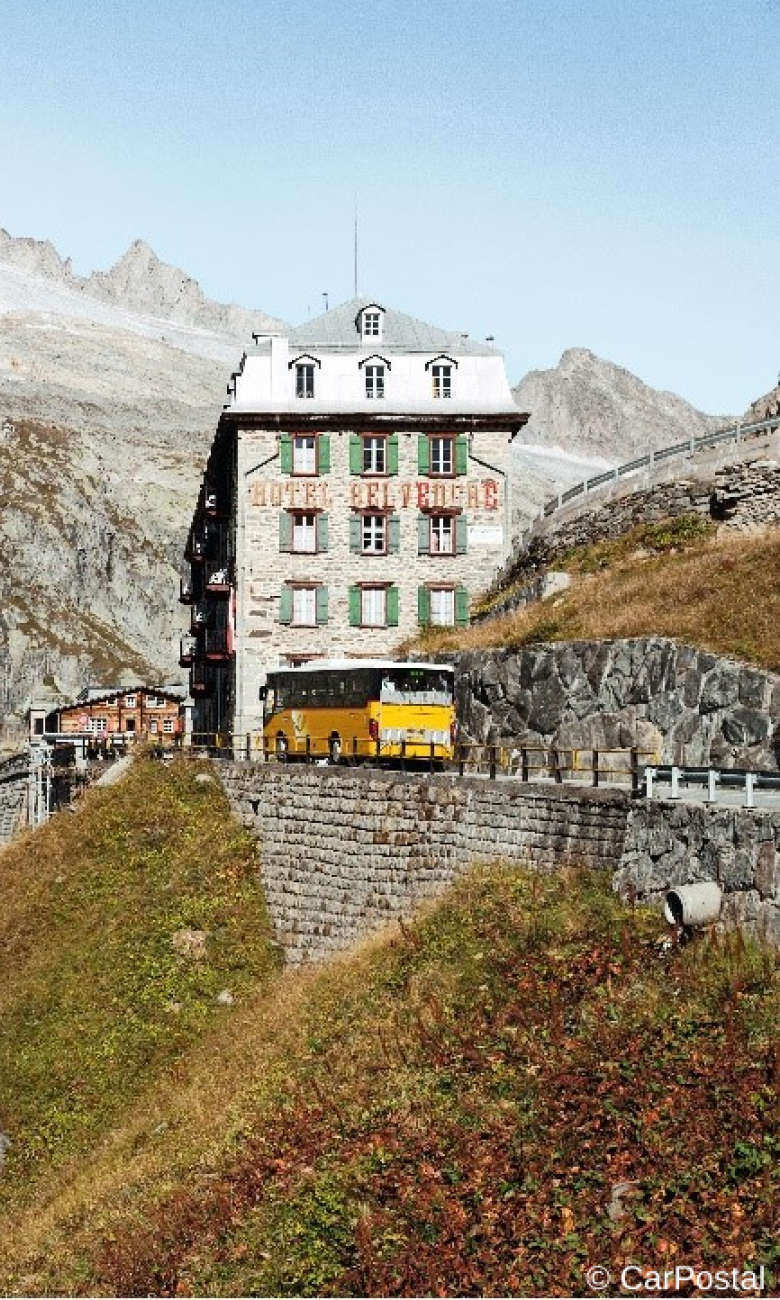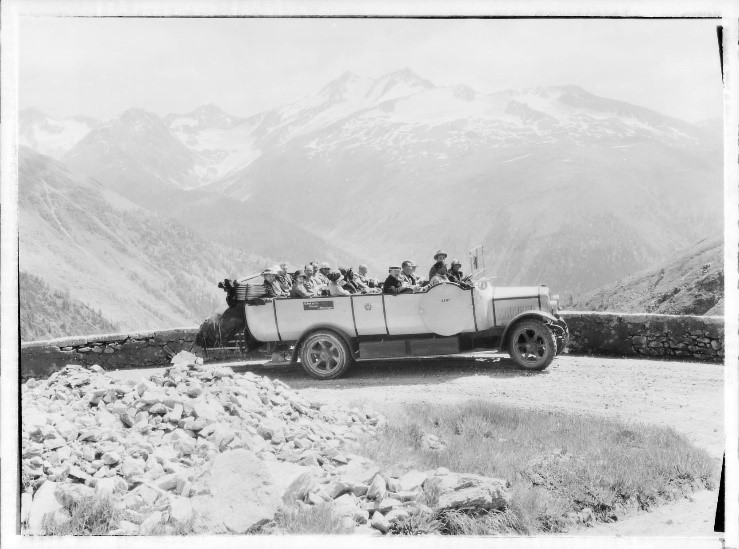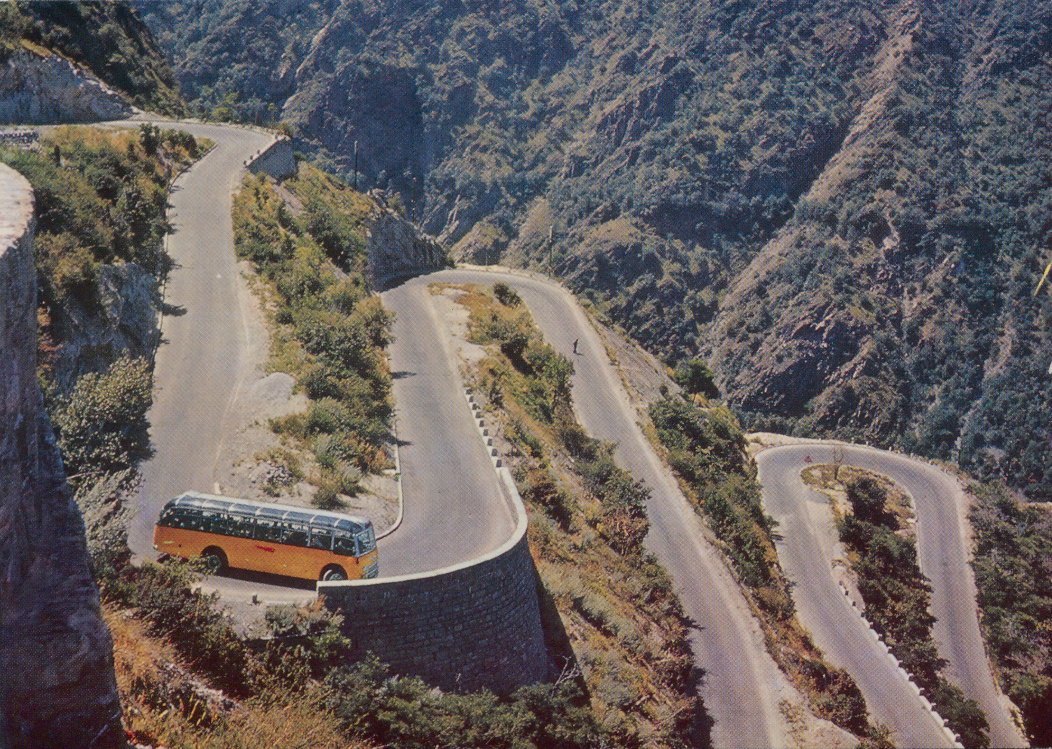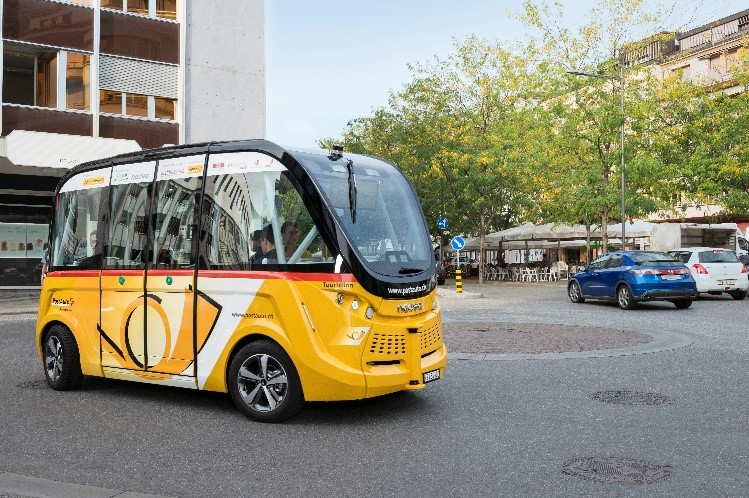PostBus: a Swiss icon
With its distinctive yellow colour and trademark horn, PostBus is part and parcel of everyday life in Switzerland. Discover the history and unique features of the PostBus company as it criss-crosses through the country.
Switzerland is brimming with valleys and villages far removed from the country's urban centres. Charming as the Swiss landscape is, it's also a real headache for the public transport system. Reaching every corner of the country is a real challenge which PostBus, Switzerland's leading public transport company, has met successfully. There are children who use PostBus to get to school every day; people living in remote areas depend on the yellow buses to get around.
These days, PostBus appeals to both regular travellers and tourists alike.

A bit of history
The story of PostBus first began in 1849, when the then Federal Mail took over the cantonal horse-drawn coach services the last of which, the legendary Gotthard horse-drawn mail coach, still travels through the Gotthard Pass today.
The first official PostBus journey took place between Bern and Detligen in 1906. But the buses used up a lot of fuel and had numerous technical issues, so three years later stagecoaches were once again employed on the route between Bern and Papiermühle. The breakthrough for PostBus came at the end of the First World War. Thanks to the conquest of the Alpine passes – starting with the opening of the Simplon postal line in 1919 and, in 1921, the creation of the Alpine Post and opening of the Grimsel, Furka, St Bernard and Oberalp passes – the PostBus company was able to expand.
After the war, forty military trucks were converted into PostBus vehicles bringing the passenger service up to 104 buses. At this point, the stagecoaches began to disappear for good. PostBus drivers also began to serve as guides, and the scenic tours offered by the Alpine Post gained a worldwide reputation.
As the network of postal lines was gradually extended throughout Switzerland, PostBus turned from a simple public transport service to a veritable social institution, linking rural folk with the modern life of the towns and cities. Not only did it venture into remote and mountainous parts, PostBus also operated in Switzerland's central plain in order to serve the villages and towns. And don't forget that the buses weren't just transporting schoolkids, villagers and tourists – they also had letters, parcels, milk cans, fridges and even chickens on board.
After a number of upgrades to its vehicles, in 2003 PostBus recorded its 100 millionth passenger.

© Museum of Communication
One of a kind
With its trademark bright yellow vehicles and three-tone horn, the PostBus brand and company are, for many Swiss people, synonymous with school outings or leisure trips on winding mountain roads.
Distinctive horn
The notes of the distinctive three-tone horn come from none other than the overture of Rossini's opera William Tell. But why not just an ordinary horn?
First, there's nothing new about postal horns – a musical instrument used by some mail carriers – which were around at the time of the horse-drawn mail van and allowed the drivers, known as postillons, to announce the arrival and departure of their stagecoaches. When the motorised Alpine Post became widespread in Switzerland from 1919 onwards, after an initial few years of silence the horn re-entered the debate – because it wasn't just the yellow bus winding its way over the mountainous paths. Accidents became so frequent that PostBus decided to reinstate the horn to warn other vehicles on road sections with poor visibility. As the traditional hand-operated horns didn't have the required range, a three-tone horn with an electric compressor was created – and reverberated around the Swiss mountains for the first time in 1923.

Bright yellow
And what about the distinctive yellow colour? 'Swiss Post yellow' has its roots in the 15the century, when Emperor Maximilian of Austria commissioned the Italian-born von Thurn und Taxis brothers to transport his mail. In their emblem, the brothers decided to use the imperial colours at the time – black and yellow. From then on, all of the coaches sported the same colours so that the emperor's mail service could be spotted immediately. However, it wasn't until the 19th and 20th centuries that the yellow colour really took hold in Europe. Like in Switzerland, where 'Swiss Post yellow' was widespread in the 19th century but only fully established throughout the country in 1946.
And it was only in 1959 that all new vehicles of PostBus contractors adopted the same bright yellow. Before then, each one had its own separate colours. In fact, some routes even had different colour vehicles covering the same itineraries as Swiss Post independent contractors used their own vehicles with their own colours.

© PTT archives, Köniz
It wasn't until a good many years later in 2002 that Swiss Post's trademark yellow colour was registered and officially protected. Since then, the colour has become an integral part of the company's corporate identity. In Switzerland, this is the third time that a colour has been granted trademark protection – lilac for Milka's chocolate wrappers and orange for Wander's Ovaltine products.
From horse-drawn carriage to autonomous electric vehicle
As a leading bus company in the public transport sector, PostBus also strives to be a forerunner in alternative means of transport.
For example, it was the first Swiss transport company to roll out fuel cell technology. Almost 100% of the hydrogen needed for this was produced with electricity generated from renewable hydropower.
In 2016, PostBus also put a number of electric buses into operation. These pilot projects are expected to result in a 100-strong electric and fuel cell bus fleet by 2024.
PostBus has also been using hybrid diesel-electric buses since 2011. These vehicles save between 20 and 30% of the fuel required for buses that only run on diesel. At the moment there are 50 hybrid electric buses in Switzerland.

PostBus is also looking to shape the mobility of the future. In 2016, it started an electric shuttle pilot project known as SmartShuttle in the city centre of Sion in Valais. The driverless vehicles are the first of their kind in the Swiss public transport sector, and the first self-driving public transport vehicles in the world.The project, which was renewed in 2021, now includes on-demand services – allowing any traveller to book a shuttle free of charge for the route they want.

PostBus in figures
In 2020, more than 430,000 commuters, schoolchildren, holidaymakers and tourists took a seat on the yellow buses every day. The same year, PostBus operated 936 routes numbering a total of 16,865 kilometres and 13,489 stops, transporting almost 127 million passengers over 787 million kilometres.
The PostBus fleet not only connects Switzerland's remotest villages with nearby towns and cities but also binds different parts of the country together. And it isn't just a byword for reliability; it is also a sentimental symbol that is very much part of Switzerland's image – the bright yellow bus on a hairpin bend, surrounded by snow-capped mountains.




